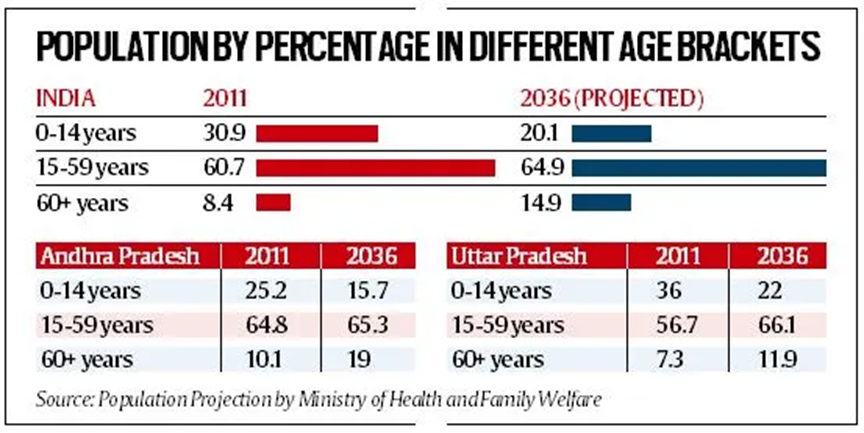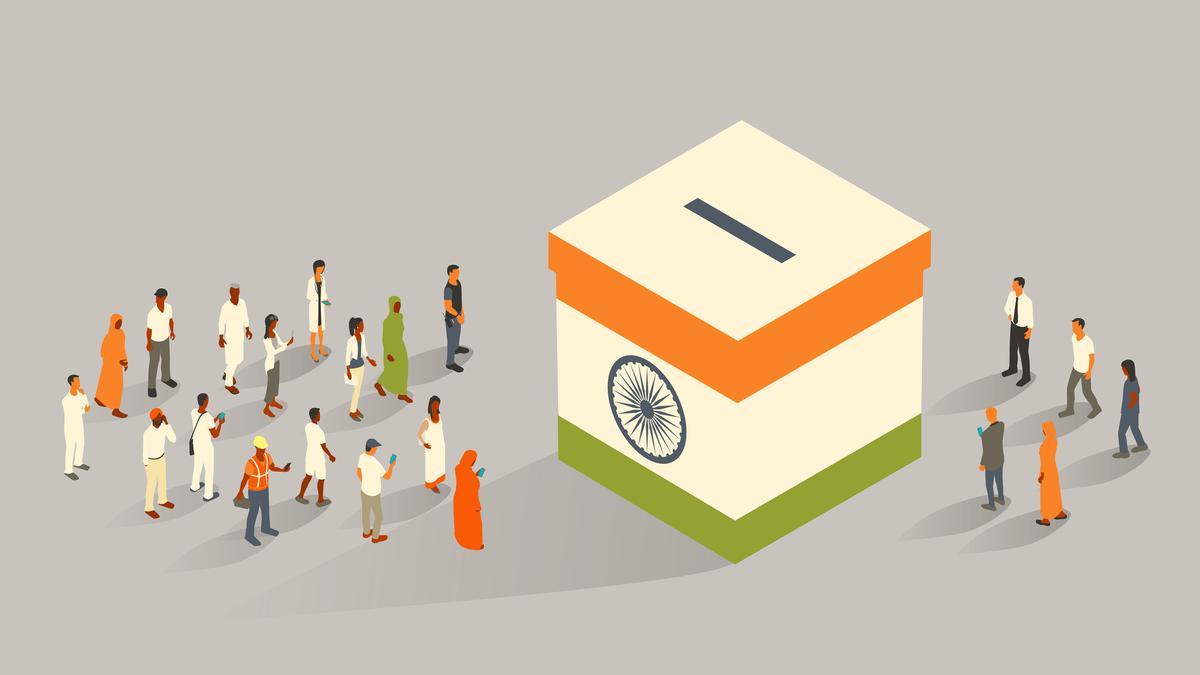Context:
Southern Indian states are experiencing a unique demographic shift that presents significant socio-economic and political challenges. Recent discussions among state leaders, especially in Andhra Pradesh and Tamil Nadu, underscore the need to address the implications of declining fertility rates and a rapidly ageing population. This trend, a result of successful family planning policies, is now seen as a double-edged sword, as it brings new challenges related to ageing and demographic representation.
- Falling Fertility Rates: Southern states have achieved significant reductions in fertility, contributing to slower population growth than in many northern states.
- Ageing Population: The population in these states is ageing faster, leading to a shrinking workforce and increasing dependency ratios.
- Policy Challenges: Southern state leaders are exploring ways to balance population growth without sacrificing gender equity and economic development.
Current Demographic Situation in India:
India's demographic landscape has transformed considerably, and the southern states have led the way in reducing fertility. However, this success comes with its own set of consequences.
- Low Fertility Rates: Tamil Nadu and West Bengal have recorded a Total Fertility Rate (TFR) of 1.4 between 2019 and 2021, below the replacement level of 2.1. Andhra Pradesh, Telangana, Kerala, Punjab, and Himachal Pradesh also report low TFRs of around 1.5.
- Regional Variations in Population Growth: In contrast, northern states like Bihar (TFR 3.0), Uttar Pradesh (2.7), and Madhya Pradesh (2.6) have higher fertility rates, resulting in faster population growth.
- Implications of Low Fertility: States with low TFRs now face the challenge of a shrinking young population, leading to an imbalance in age demographics and a growing elderly population.

Economic Implications of an Ageing Population:
The economic impact of an ageing population in southern India is profound, affecting healthcare costs, workforce availability, and dependency ratios.
- Old Age Dependency Ratio: The dependency ratio, which measures the number of elderly per 100 working-age individuals, is critical for understanding the economic impact of ageing. In 2021, Kerala's ratio was 26.1, Tamil Nadu’s was 20.5, Himachal Pradesh’s was 19.6, and Andhra Pradesh’s was 18.5—all above the 15% threshold.
- Healthcare Expenditure: Ageing populations lead to higher healthcare spending. In 2017-18, southern states, with only 20% of India's population, accounted for 32% of the nation’s out-of-pocket healthcare costs, particularly on age-related illnesses.
- Strain on Economic Growth: A high old-age dependency ratio means fewer working-age individuals to support the elderly, leading to economic strains as states face rising healthcare and social welfare costs.

Political Implications and the Impact of Delimitation:
The demographic shift in southern India has notable political implications, especially concerning seat allocation in the Parliament, which could alter political power balances between northern and southern states.
- Delimitation and Representation: A planned redistribution of parliamentary seats in 2026, based on updated population counts, is likely to favor states with higher fertility rates, like Uttar Pradesh and Bihar. This means states like Tamil Nadu, Kerala, and Andhra Pradesh could lose parliamentary seats.
- Federal Resource Allocation: Southern states argue that they contribute more tax revenue but receive a smaller share of federal resources due to their slower population growth, impacting regional development.
- Calls for Equitable Representation: Southern leaders advocate for representation policies that take into account economic contributions rather than solely population size, ensuring fair allocation of seats and resources.
Evaluating Pro-Natalist Policies:
Some southern states have proposed pro-natalist policies to address declining fertility rates, but such policies have shown limited success globally and raise concerns over their socio-economic impact.
- Challenges with Pro-Natalist Policies: Studies show that educated women are less inclined to respond to pro-natalist incentives that do not align with their career and family priorities. Such policies may have limited success and could even backfire.
- Impact on Female Workforce Participation: Increased fertility could reduce women’s participation in the workforce, negatively affecting economic growth in states where women contribute significantly to the economy.
- Alternative Approaches: Successful models internationally focus on work-family policies, such as paid parental leave, accessible childcare, and flexible work arrangements, which help balance fertility rates and economic productivity.
Alternative Approaches and Solutions
Given the limitations of pro-natalist policies, southern states are exploring alternative solutions to manage the ageing population and sustain economic growth.
1. Increasing Labor Force Participation: Extending the working lifespan for senior citizens and encouraging women’s workforce participation can help reduce the old-age dependency ratio.
o Encouraging policies that allow older individuals to remain economically active.
o Developing skill programs for women and senior citizens to enhance workforce participation.
o Supporting part-time or flexible work options for elderly and family caregivers.
2. Attracting Economic Migrants: Southern states are economic hubs that attract migrants from other regions, which can help fill labor gaps, though challenges remain.
o Migrant labor fills essential workforce needs, especially in sectors like construction and services.
o However, these migrants are often counted in their home states for resource distribution, leaving destination states to bear social and financial costs without federal support.
o Addressing the social and economic integration of migrant populations to ease demographic imbalances.
3. Enhanced Support Systems for Ageing Populations: To manage an increasing elderly demographic, states need comprehensive social and healthcare policies.
o Investing in healthcare infrastructure to handle age-related health needs.
o Providing affordable, accessible healthcare to reduce out-of-pocket spending by elderly residents.
o Expanding social security systems to offer adequate support for the elderly and reduce dependency on families.
Conclusion:
Southern India's demographic trends present a complex scenario that demands multidimensional solutions. While pro-natalist policies may not yield the desired results, a combination of healthcare investment, flexible work-family policies, and labor-force participation enhancements offers promising pathways. As India approaches the delimitation exercise, the need for equitable representation and resource distribution will be essential to address demographic disparities across regions and ensure sustainable development throughout the country.
|
Probable questions for UPSC Mains exam: Analyze the demographic and socio-economic challenges posed by declining fertility rates and an ageing population in India. Discuss the potential impact of these trends on economic growth, healthcare costs, and workforce availability. |







